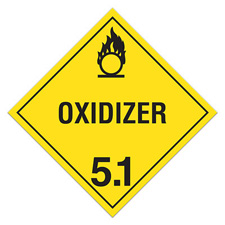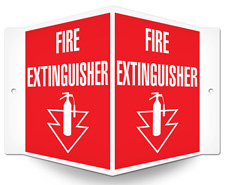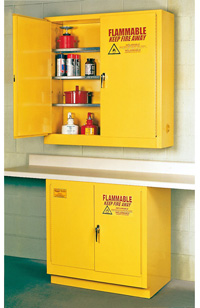| The Home page of ILPI's Safety Data Sheet (SDS) Resource, the leader in SDS information since 1995! | |
| The history and philosophy behind this resource. | |
| A curated collection of books and reference materials concerning Safety Data Sheets and closely related topics. | |
| Paste your plain text SDS into the SDS-Demystifier, and it will be converted into a hypertext-enriched document with links to detailed explanations of each key term. | |
| An extensive list of frequently asked questions about Safety Data Sheets including regulations, content, compliance, and more. | |
| A humorous take on Safety Data Sheet jargon. Fill in the blanks on our entry form to generate a personalized Unsafety Data Sheet to share with your coworkers. | |
| Since 1995, we've maintained this massive curated list of the best places to find Safety Data Sheets on the Internet. | |
| You are here! Way more than a glossary, this hypertext-enhanced resource covers hundreds of SDS-related terms and expert knowledge. Each entry includes both the SDS relevance and links to additional authoritative resources. | |
| Archived results of Safety Data Sheet related polls taken by some of our millions of site visitors | |
| The OSHA regulations behind SDS regulations, including the inspection guidelines and over 400 official interpretations letters under the Hazard Communication Standard | |
| Commercial suppliers of SDS authoring and management software as well as cloud compliance services. | |
| Commercial companies that will create SDS's for your specific needs as well as SDS translation companies. |

Safety signs, banners, and scoreboards? Get yours at Safety Emporium!

Be sure you're in compliance with DOT placards and labels from Safety Emporium.
Definition
Oxidation can be defined in several different ways. The simplest and most rigorous of these is "the loss of electrons from an atom, compound or molecule."
In general use, the term is generally applied to a chemical reaction of a substance with oxygen (O2) or an oxygen-containing material which adds oxygen atom(s) to the compound being oxidized.
Either way, you can not create energy from nothing. Whenever something is oxidized, something else must undergo the opposite (gain of electrons), reduction.
A species that causes oxidation is called an oxidant, oxidizer, or oxidizing agent.
A species that causes reduction is called a reductant or reducing agent.
Additional Info
Oxidation and reduction are easier to explain using oxidation states (also called oxidation numbers). Oxidation states are assigned to atoms in a molecule or compound using a general set of rules. Take a look at this tutorial to see the rules and test yourself.
A simple example of an oxidation-reduction reaction (remember you can't have one without the other) is the reaction of hydrogen gas with oxygen gas to form water:
2 H2 + O2  2 H2
2 H2

We have all kinds of safety wall signs at Safety Emporium.
In this reaction, oxygen oxidizes hydrogen from H2 in the zero oxidation state to H+ in the +1 oxidation state. Oxygen, in turn, must be reduced from the zero oxidation state to O2- in the -2 oxidation state. This particular reaction also produces a large amount of heat energy (exothermic, can you say Hindenberg?).
By definition, during an oxidation-reduction reaction the oxidizer (oxidant) is always reduced and the reducing agent (reductant) is always oxidized.
Another example of the tremendous amount of heat that can be generated by an oxidation-reduction reaction is the thermite reaction (link includes video). Here, iron oxide (rust, containing Fe3+) is reduced to iron metal (Fe0) and the aluminum (Al0) is oxidized to aluminum oxide (containing Al3+):
Fe2O3 (solid) + 2 Al (solid)  2 Fe (liquid) + 2 Al2O3 (solid) + lots of heat.
2 Fe (liquid) + 2 Al2O3 (solid) + lots of heat.
This reaction generates so much heat that the iron metal product is molten. In fact, this reaction can be used to weld pipes underwater.
SDS Relevance
This series of terms usually appears on a Safety Data Sheet to warn of very high chemical reactivity and/or the potential for a serious accident if the material comes into contact with incompatibles. This information will be found in Section 10 (stability and reactivity) of the SDS. It may found in Section 6 (accidental release measures) in the context of a spill cleanup procedure or possibly Section 7 (handling and storage) with respect to properly segregating chemicals during storage.
Oxidation reactions are usually very exothermic. Therefore, if a compound says "OXIDIZER", this means that it can cause other materials to combust more readily (or upon contact!) or make fires burn more fiercely. This property may be explicitly noted in Section 5 (fire-fighting measures) of the SDS.
Always store oxidizers away from flammable or combustible materials as well as sources of heat, flame or sparks. Be sure to examine the SDS and label carefully to determine which materials are incompatible.
Further Reading

Flammable storage safety cabinets from Safety Emporium can help you with proper chemical segregation and storage.
- How to Work Safely with - Hazardous Products using the "Flame Over Circle" Pictograms at the Canadian Centre for Occupational Health & Safety discussed work with oxidizers.
- Waste Site Worker Safety 40 Hour HAZWOPER discusses gaseous, cryogenic, inorganic and other kinds of oxidizers and how they work.
- Oxidizing Chemicals at Brandeis University.
- Definitions of Oxidation and Reduction with examples at Chemistry LibreTexts.
- Oxidation-reduction (redox) reactions at Khan Academy.
- Oxidation/Reduction, a multipage tutorial at Internet Chemistry, Kapi'olani Community College, courtesy of the Internet WayBack Machine.
- Reduction and Oxidation Reactions at Wyzant.
- Oxidation-Reduction Reactions at Purdue University. Also a good chemistry student resource.
- How batteries work at Howstuffworks (hint: oxidation and reduction!)
- The thermite reaction in terrific detail and a QuickTime video. Brought to you by...us!
See also: air, exothermic, incompatible.